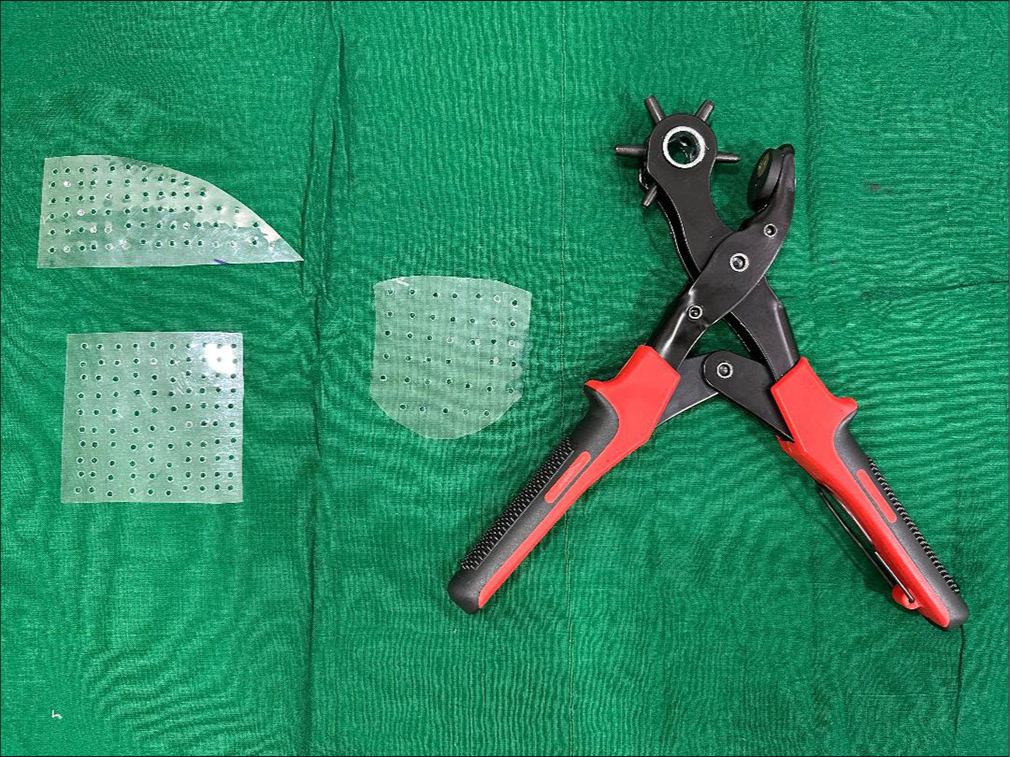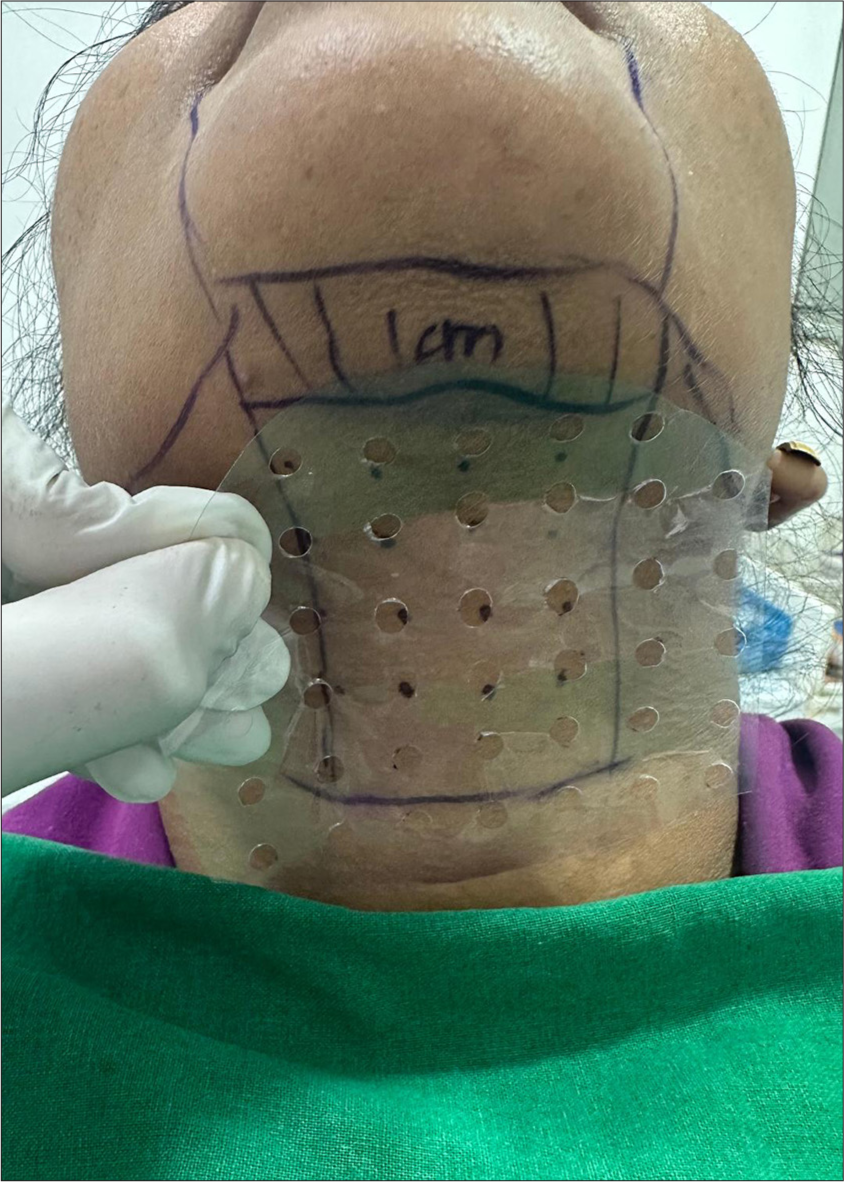Translate this page into:
Designed template for accurate marking of procedural sites in dermatosurgery

*Corresponding author: Dr. Maya Vedamurthy, Department of Dermatology, RSV Skin and Research Centre, Chennai, Tamil Nadu, India. mvrsvskin@gmail.com
-
Received: ,
Accepted: ,
How to cite this article: Vedamurthy M, Kamaraj S, Duvvuru V, Sindhu Varada S. Designed template for accurate marking of procedural sites in dermatosurgery. CosmoDerma. 2025;5:56. doi: 10.25259/CSDM_200_2024
PROBLEM
Esthetic treatments such as skin boosters, mesobotox, injection lipolysis, and various dermatosurgical procedures are highly sought after due to their minimally invasive nature. However, achieving the desired results in these procedures relies on adequate placement of markings over the treatment site. The conventional method of marking injection sites may lack precision, leading to suboptimal outcomes. Hence, there is a need for an innovative tool to enhance the accuracy and efficiency of these treatments, especially for beginners.
SOLUTION
A custom-made pre-designed template addresses the limitations of traditional marking methods of using a non-flexible stencil or a ruler. The template is made from an overhead projector plastic sheet that is flexible, disposable, and conforms to different anatomical contours. A revolving punch plier machine with different punching sizes utilized for creating holes in belts or watches is employed to punch grids over plastic sheets [Figure 1]. The pre-marked grids included in the template are positioned precisely 0.5–1 cm apart.[1] It also helps with uniform distribution of the drugs to be administered. Injectables such as neurotoxins, lipolytic solutions, hyaluronic acid fillers, and exosomes can be administered using these templates across any part of the face or body [Figure 2]. In the vitiligo mini punch grafting technique, the templates are prepared for the donor and recipient site, and the grids are positioned at intervals of 0.5 cm, which helps to obtain more grafts from a small area. While treating focal hyperhidrosis with neurotoxins, the templates can be prepared based on the anatomical location and used for marking the injection sites. Its utilization can be further extended while performing intralesional radiofrequency and cryotherapy on keloids or hypertrophic scars.[2] The advantage of a customized approach is that it offers more flexibility to perform various dermatosurgical indications at different anatomical sites with minimal overlap. It also helps beginners mark precise locations for injection with confidence, reducing the overall procedure time. These inexpensive disposable templates also reduce the chances of infection. The disadvantage is that it is time-consuming to design templates for each anatomical location as well as the size of the lesion.

- A revolving punch plier with different punch sizes is used to create grid patterns in the plastic sheet at a distance of 0.5–1 cm, which conforms to different anatomical areas.

- A designed template is used to mark the procedural site in injection lipolysis.
Ethical approval:
Institutional Review Board approval is not required.
Declaration of patient consent:
Patient’s consent is not required, as there are no patients in this study.
Conflicts of interest:
There are no conflicts of interest.
Use of artificial intelligence (AI)-assisted technology for manuscript preparation:
The authors confirm that there was no use of artificial intelligence (AI)-assisted technology for assisting in the writing or editing of the manuscript and no images were manipulated using AI.
Financial support and sponsorship: Nil.
References
- Mesococktails and mesoproducts in aesthetic dermatology. Dermatol Ther. 2020;33:e14218.
- [CrossRef] [Google Scholar]
- Effectiveness of radio-frequency ablation in the treatment of keloids and hypertrophic scar-a short duration interventional study. J Evid Based Med Healthc. 2017;4:5887-9.
- [CrossRef] [Google Scholar]





